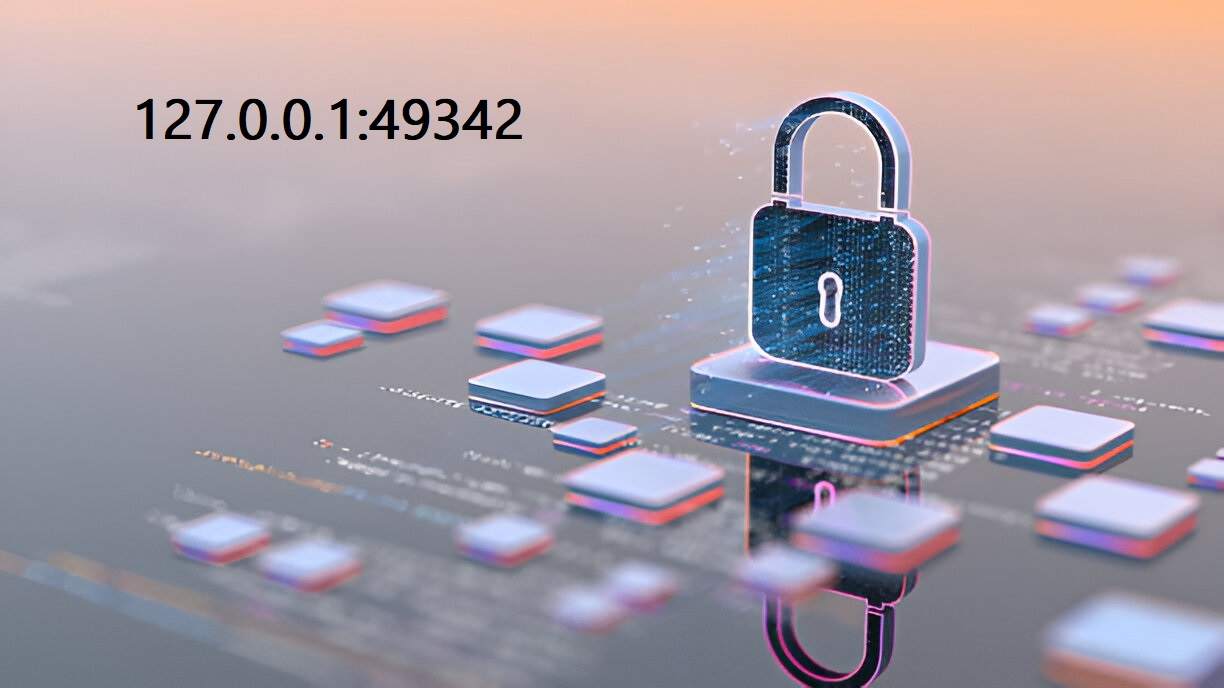
Testing web applications using 127.0.0.1:49342.
In the dynamic realm of software development, mastering the art of networking and understanding the intricacies of localhost is not just beneficial; it’s essential. Among the plethora of IP addresses used in various network communications, 127.0.0.1 stands out as the localhost. This IP address plays a critical role in the developer’s toolkit, acting as a gateway to a world where applications can be tested and debugged in isolation. This article aims to demystify 127.0.0.1:49342, shedding light on its significance, operational functionality, and practical usage within development environments. By delving into the details of this localhost address and the port associated with it, developers can leverage its capabilities to enhance their workflow and streamline their development processes.
What is 127.0.0.1?
At its core, 127.0.0.1 is the loopback address defined in the Internet Protocol (IP) suite, specifically within IPv4 networking. It is commonly referred to as localhost and serves a crucial purpose: it allows a computer to establish a connection with itself. This self-communication capability is particularly beneficial for developers, as it enables them to test and debug applications without the necessity for an external server or an internet connection. When developers navigate to 127.0.0.1 in their web browser, they are effectively creating a controlled environment that simulates the behavior of web applications as they would function on a live server. This feature makes localhost an indispensable tool for development, testing, and debugging, allowing for quick iterations and refinements in coding without the complications that can arise from network dependencies.
Understanding Ports: The Role of 49342
When we refer to 127.0.0.1:49342, the number 49342 is a port number, and understanding its role is vital for any developer working within a networked environment. Ports act as communication endpoints, allowing different services and applications to run concurrently on a single IP address. Each port can handle a distinct type of traffic, making it possible to have multiple applications or services operating simultaneously without conflict. In this instance, the port number 49342 is classified as a dynamic or ephemeral port, which means it is typically assigned by the operating system for temporary use, often for specific applications that do not have fixed port assignments.
Why Use Dynamic Ports?
Dynamic ports like 49342 are widely favored in development for several compelling reasons. First, their inherent flexibility allows developers to assign ports as needed without the constraints of fixed port numbers, thereby reducing the risk of port conflicts when running multiple instances of an application. Second, utilizing dynamic ports can enhance security; higher-numbered ports are less likely to be targeted by malicious actors, providing a degree of obscurity that can safeguard development environments. Lastly, dynamic ports streamline the development process by simplifying service configurations, enabling developers to set up and test services quickly without the burden of managing established protocols or predefined port assignments.
Setting Up a Local Development Environment
To fully harness the power of 127.0.0.1:49342, it is imperative to set up a comprehensive local development environment. This entails a series of methodical steps that will equip developers with the necessary tools to test and refine their applications effectively.
Step 1: Choose Your Development Stack
The foundation of your development environment begins with selecting an appropriate development stack that aligns with your project requirements. Various stacks are available, each offering distinct features and benefits. Popular choices include the LAMP stack (Linux, Apache, MySQL, PHP), which is widely used for web development; the MEAN stack (MongoDB, Express.js, Angular, Node.js), known for its JavaScript-based applications; and Django, a Python-based framework that promotes rapid development and clean, pragmatic design. The choice of stack will significantly influence your development process, so it’s essential to select one that best fits the specific goals of your project.
Step 2: Install Required Software
Once you have selected your development stack, the next step is to ensure that all necessary software components are installed on your machine. For instance, if you are opting for the LAMP stack, you will need to install Apache for web serving, MySQL for database management, and PHP for server-side scripting. To simplify this installation process, consider using bundled solutions like XAMPP or MAMP, which package these components together, making it easier to get started. These tools not only streamline the installation process but also provide a user-friendly interface to manage your local server environment.
Step 3: Configure Your Web Server
After installing the required software, the next critical step involves configuring your web server to listen on 127.0.0.1:49342. This configuration is crucial for directing traffic to the correct location within your local environment. Depending on the web server you are using, you may need to modify specific configuration files. For instance, in Apache, you can set up a VirtualHost entry that binds your application to this IP address and port combination. An example of such a configuration might look like this:
apacheCopy code<VirtualHost 127.0.0.1:49342>
DocumentRoot "/path/to/your/project"
ServerName localhost
</VirtualHost>
This configuration ensures that any request directed to 127.0.0.1:49342 will route to the specified document root, serving your application correctly when accessed through a web browser.
Step 4: Launch Your Application
With the server configured, you can now launch your application and navigate to http://127.0.0.1:49342 in your web browser. This action initiates a request to your local server, allowing you to view and interact with your application as if it were hosted on a live environment. The beauty of using localhost is that it enables developers to make real-time adjustments and see immediate results, thereby fostering an iterative and agile development process.
Common Uses for Localhost Development
The utilization of 127.0.0.1:49342 unlocks a myriad of opportunities for developers, making it a cornerstone of local development practices. Below are some prevalent applications of localhost in the development workflow.
1. Testing Web Applications
One of the primary uses of localhost is to facilitate thorough testing of web applications. By running applications in a controlled local environment, developers can identify and resolve issues before deployment, ensuring a smoother launch. This capability allows for extensive testing of features, functionality, and user experience without the complications associated with external servers. Furthermore, developers can simulate different scenarios, such as various browser conditions or user inputs, to assess how their applications respond, ultimately leading to a more robust product.
2. API Development
When creating APIs, localhost serves as an ideal testing ground. Developers can make requests to their local server to verify that endpoints function as expected, ensuring that data retrieval and manipulation processes operate smoothly. This local testing is essential for identifying errors or inconsistencies before making APIs publicly accessible. Additionally, using localhost eliminates the need for internet connectivity, enabling uninterrupted testing and development even in restrictive network environments.
3. Database Management
Another significant advantage of using 127.0.0.1 is the ability to manage databases locally. Developers can interact with databases such as MySQL or PostgreSQL, executing queries and testing data retrieval processes without the complications of a live environment. This local database management capability allows for a secure and efficient way to develop data-driven applications, ensuring that database schemas and queries are functioning as intended before they are deployed to production.
Troubleshooting Common Issues
While utilizing 127.0.0.1:49342 can streamline the development process, developers may encounter certain common issues along the way. Here are several troubleshooting tips to help address these challenges effectively.
Port Already in Use
One frequent issue is receiving an error indicating that the port is already in use. This situation can arise if another service is actively listening on 49342. To troubleshoot, developers should check for any other applications running on that port. Tools such as netstat or lsof can be instrumental in identifying processes that may be conflicting with your local server setup. By resolving these conflicts, developers can free up the port for their intended application.
Firewall Restrictions
Another potential hurdle is firewall restrictions that may block access to the specified port. Many operating systems come with built-in firewalls that can prevent applications from communicating over certain ports. To troubleshoot this issue, developers should review their firewall settings and ensure that traffic through 49342 is permitted. Adjusting these settings will allow your local server to communicate effectively without hindrance from security protocols.
Service Not Running
If you cannot connect to 127.0.0.1:49342, it’s crucial to verify that the service you intend to access is indeed running. Developers should check the server logs for any error messages that may provide insight into what went wrong during the startup process. Additionally, confirming that the correct server command has been executed and that the configuration files are set up properly can often resolve connectivity issues.
Best Practices for Localhost Development
To enhance efficiency and productivity when working with 127.0.0.1:49342, developers should consider adopting the following best practices:
1. Version Control
Utilizing a version control system, such as Git, is essential for managing changes in your project. Version control allows developers to track modifications, collaborate effectively with team members, and easily revert to previous versions if necessary. By incorporating version control into your workflow, you can maintain a clear history of changes, ensuring that your project remains organized and manageable throughout the development lifecycle.
2. Documentation
Effective documentation of your setup process, configurations, and changes made to your project is vital. Well-maintained documentation serves as a reference for both current and future developers, promoting consistency and aiding in troubleshooting. When working in teams, clear documentation ensures that all members are on the same page, reducing the learning curve for new developers and enabling smoother transitions in project responsibilities.
3. Regular Updates
Keeping your development tools, libraries, and frameworks up to date is crucial for maintaining a secure and efficient development environment. Regular updates not only help mitigate security vulnerabilities but also provide access to the latest features and improvements within the development ecosystem. By prioritizing updates, developers can take advantage of enhancements that contribute to overall productivity and project quality.
Conclusion
In conclusion, a thorough understanding of 127.0.0.1:49342 is indispensable for developers looking to create efficient and effective applications within a local environment. By leveraging the power of localhost, developers can streamline their workflows, conduct thorough testing, and ensure that their code is robust and reliable prior to deployment. Embracing the strategies and best practices outlined in this guide will undoubtedly enhance your development experience, making it more productive and rewarding.
FAQs
Port 49342 is a dynamic port that allows multiple applications to run on the same IP without conflict, aiding in local testing.
You can test various applications, including web apps, APIs, and databases, in a controlled local environment using this address.
Common troubleshooting steps include checking for port conflicts, verifying service status, and adjusting firewall settings.




